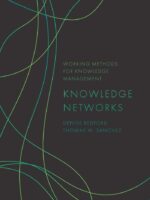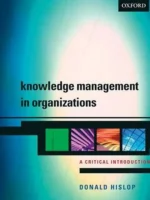Managing Knowledge Networks Review
Managing Knowledge Networks by Anna Grandori is a governance manual for inter-organizational learning. It treats alliances, consortia, and ecosystems as design problems: choose structures, contracts, and coordination mechanisms that fit knowledge goals and risks.
Overview
Grandori maps network forms between markets and hierarchies, detailing ownership, decision rights, incentive schemes, and information flows. She links competencies and complementarities to modular architectures and coordination choices.
Summary
Core tools: property-rights allocation, contracting for knowledge creation and sharing, and selecting coordination modes—standards, routines, platforms, boundary roles. The book shows how to manage spillovers, protect intellectual assets, and still get innovation throughput. Case analyses highlight when to use loose ties for exploration versus tighter integration for exploitation.
Authors
Anna Grandori is an organizational theorist focused on economic and design logics of firms and networks. The treatment is analytical, with clear decision criteria.
Key Themes
Fit governance to knowledge type (tacit vs codified), align incentives with contribution, use modularity to lower coordination costs, and deploy boundary spanners and standards for interoperability.
Strengths and Weaknesses
Strengths: rigorous frameworks for choosing structures and contracts; actionable criteria for IP, incentives, and coordination. Weaknesses: less coverage of culture and day-to-day community stewardship; examples lean managerial, not grassroots.
Target Audience
Executives, ecosystem leads, legal and procurement teams, and program managers designing cross-firm R&D, platforms, or data-sharing agreements.
Favorite Ideas
Match exploration with looser, option-like ties; exploitation with tighter, rule-bound ties. Use staged contracts and milestones to manage uncertainty and spillovers.
Takeaways
Networks don’t manage themselves. Specify rights, incentives, and interfaces. Protect what must be protected and standardize what must travel. Good governance multiplies learning.









